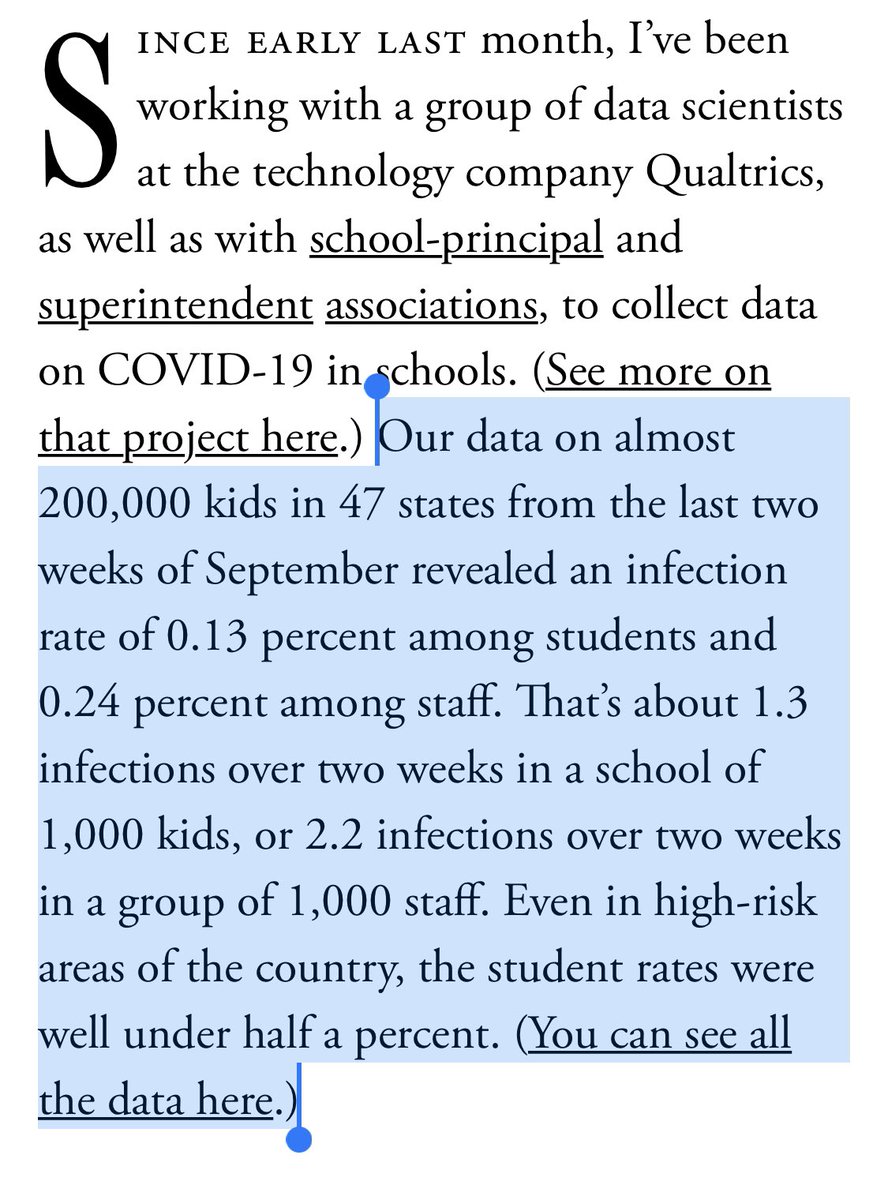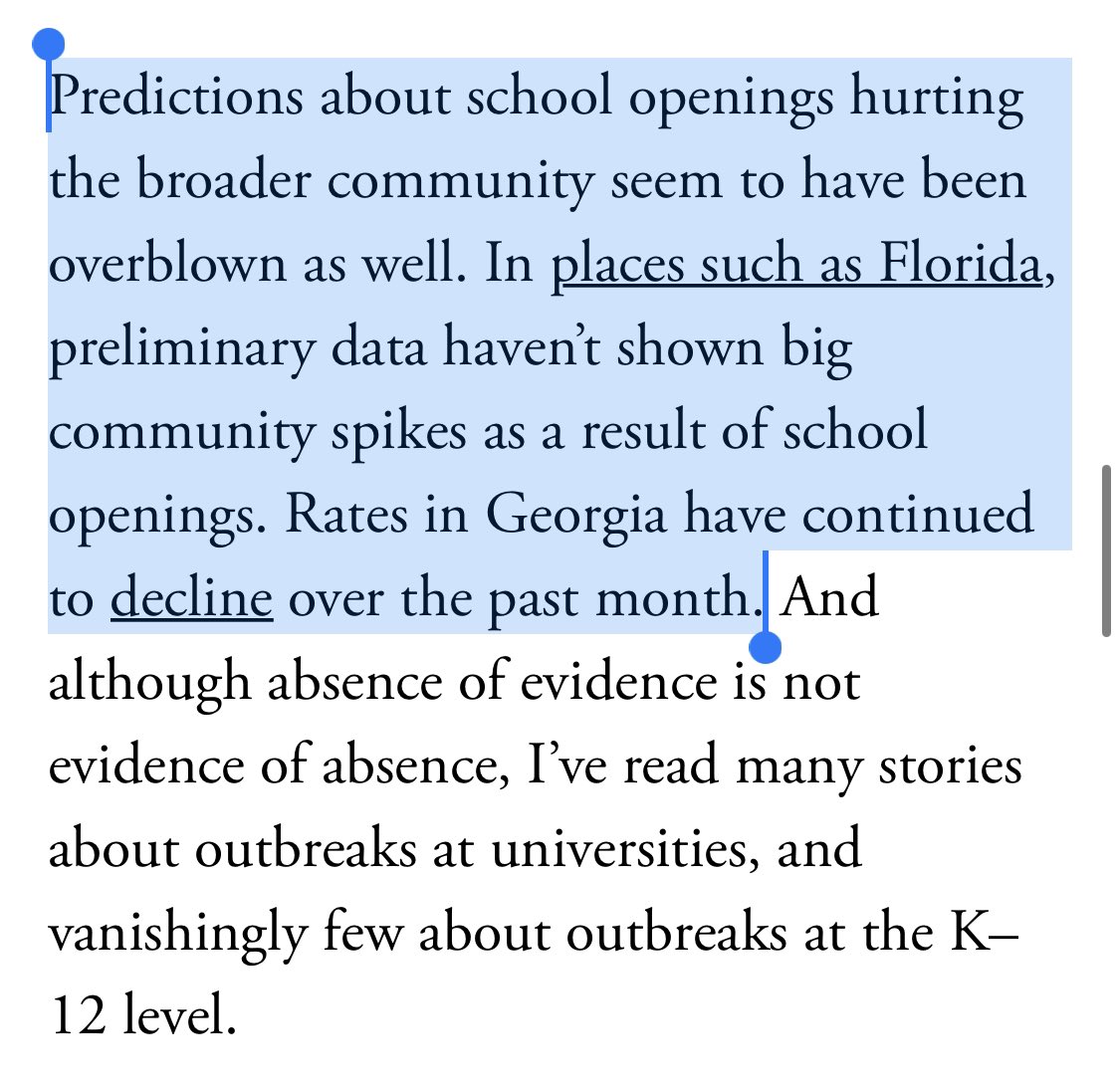
When we are thinking about the best learning environment for kids *right now* it seems to me a mistake to use pre-Covid performance as the comparison.
That’s not possible in most places so the comparison it isn’t helping us answer the relevant question:
What works best NOW? 1/
That’s not possible in most places so the comparison it isn’t helping us answer the relevant question:
What works best NOW? 1/
https://twitter.com/arunfrey/status/1321796975013044224
Partially this is bc MANY things have changed with the pandemic.
Who among us isn’t more stressed?
Kids now live under the risk of a deadly disease.
Some have lost family.
Parents have lost jobs.
All have lost freedom and social interaction.
KIDS are different now.
2/
Who among us isn’t more stressed?
Kids now live under the risk of a deadly disease.
Some have lost family.
Parents have lost jobs.
All have lost freedom and social interaction.
KIDS are different now.
2/
It is absolutely expected that test performance and learning will be lower in these circumstances - even with ideal instruction.
So when we compare Covid to pre-Covid it’s not just in-school vs at home that is being tested but:
in school - Covid vs out of school + Covid. 3/
So when we compare Covid to pre-Covid it’s not just in-school vs at home that is being tested but:
in school - Covid vs out of school + Covid. 3/
To me, comparisons of different options now - all online vs hybrid vs other? - are what we need to know what can best continue education.
We need to know what kinds of emotional and other supports kids need so they are in a place where they can learn.
4/
We need to know what kinds of emotional and other supports kids need so they are in a place where they can learn.
4/
We need to not panic about the existence of losses in test scores but accept that the world has changed, kids & teachers have changed, and expectations must change.
And we’d do well to remember kids may be learning new things not captured by tests, including coping skills!
5/
And we’d do well to remember kids may be learning new things not captured by tests, including coping skills!
5/
As much as we all hate it, the world is different now.
So let’s put our efforts into figuring out what works in this reality, bc it’s the only one we’ve got.
And remember that kids are resilient. They are learning - just maybe different things. And maybe that’s ok too.
End.
So let’s put our efforts into figuring out what works in this reality, bc it’s the only one we’ve got.
And remember that kids are resilient. They are learning - just maybe different things. And maybe that’s ok too.
End.
Addendum: my relevant expertise is in study design, not education.
Anything outside of consideration of what we can learn from this study design and suggestions for future studies are just like my opinion, man.
Anything outside of consideration of what we can learn from this study design and suggestions for future studies are just like my opinion, man.
• • •
Missing some Tweet in this thread? You can try to
force a refresh




